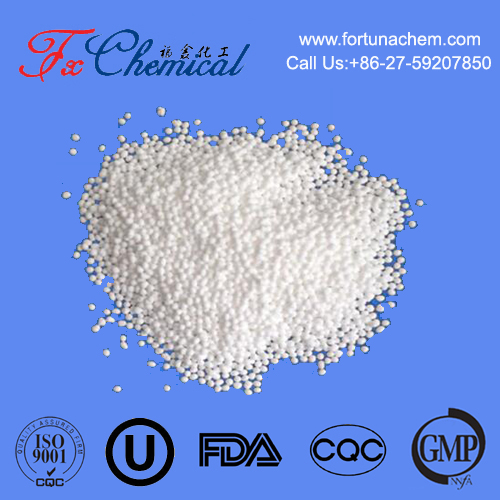
Search

Search



Rhodamine 6G (R6G) is a synthetic dye and a member of the rhodamine family of fluorescent dyes. It is commonly used in a variety of applications, such as:
Fluorescence Microscopy and Imaging: R6G is highly fluorescent, making it useful for biological and chemical labeling in microscopy. It can be excited by green light and emits red fluorescence, allowing for high-contrast imaging.
Laser Dye: It is also used in dye lasers, particularly in tunable lasers, where it serves as the gain medium. When excited by a pump laser, Rhodamine 6G can emit light at specific wavelengths, which makes it useful in spectroscopy and various laser applications.
Fluorescent Tracers: Due to its intense fluorescence, it is used as a tracer in studies where monitoring of fluid flow or other chemical processes is required.
Analytical Chemistry: Rhodamine 6G can be used as an indicator in various chemical analyses, especially in detecting the presence of specific compounds or studying chemical reactions under UV light.
The structure of Rhodamine 6G consists of a xanthene backbone with various functional groups attached, which contribute to its bright fluorescence properties. It is often used in scientific research, including biochemistry, physics, and material science, due to its stability and high quantum yield.
It is important to handle Rhodamine 6G with care, as it is a chemical dye and may have toxicity or environmental impacts if mishandled.
Rhodamine 6G (R6G) has a wide range of applications due to its strong fluorescent properties. Some of the primary applications of Rhodamine 6G include:
Biological Labeling: Rhodamine 6G is used in fluorescence microscopy to label biological samples, such as cells or tissues, allowing researchers to observe specific components with high contrast under a microscope. It is often conjugated to antibodies or other biomolecules to track their location in biological systems.
Live Cell Imaging: In live cell imaging, Rhodamine 6G can help monitor cellular processes in real-time, as it fluoresces brightly when excited by ultraviolet (UV) or green light.
Dye Lasers: Rhodamine 6G is commonly used as a gain medium in dye lasers. These lasers are tunable, meaning the output wavelength can be adjusted by changing the dye and the surrounding conditions. R6G emits in the yellow-orange region of the visible spectrum, making it useful for specific laser applications.
Pulsed Laser Systems: It is also used in pulsed laser systems for spectroscopy and experiments requiring short-duration, high-intensity light pulses.
Flow Tracing: Rhodamine 6G is used in fluid dynamics and environmental studies to track the flow of liquids in pipes or natural water systems. When added to a fluid, the dye fluoresces under UV light, allowing for easy visualization of the flow patterns and helping in studies of dispersion or contamination.
Chemical Tracing: It can be used to track the movement of chemicals or particles in complex environments or chemical processes, providing insights into reaction mechanisms and diffusion behavior.
Fluorescence Spectroscopy: Rhodamine 6G is used in fluorescence spectroscopy to measure the intensity and wavelength of light emitted by a sample after excitation. This can provide information about the chemical or structural properties of a material.
Raman Spectroscopy: It is sometimes used as a standard or reference in Raman spectroscopy, a technique that analyzes the vibrational modes of molecules.
pH and Ion Sensing: Rhodamine 6G can be used as part of chemical sensors for measuring pH or metal ion concentrations. The fluorescence intensity of Rhodamine 6G can change in response to environmental conditions, allowing for real-time monitoring in chemical analysis.
Detection of Chemical Compounds: It is used in the detection of specific chemicals, such as pollutants or toxins, in environmental monitoring and forensic applications.
Cancer Diagnosis: R6G can be used in the development of fluorescent probes to detect cancer cells, as the dye can be conjugated to molecules that selectively bind to tumor markers, providing a way to visually identify and monitor cancerous growths.
Drug Delivery Research: Rhodamine 6G is also used in drug delivery studies, where it is incorporated into nanoparticles or liposomes to monitor the distribution and release of drugs within biological systems.
Water Quality Monitoring: Rhodamine 6G is sometimes used in environmental studies to trace the movement of pollutants in water bodies. Since it fluoresces brightly under UV light, it helps identify sources of contamination and monitor the dispersion of pollutants over time.
Detection of Biological Fluids: In forensic applications, Rhodamine 6G can be used to detect bodily fluids like blood or semen at crime scenes. The dye can be used to enhance the visibility of these fluids under UV light, aiding in crime scene investigations.
Trace Evidence: Rhodamine 6G is also used in forensic analysis to trace small particles or fibers that may be left at crime scenes, allowing investigators to find potential evidence that might otherwise go unnoticed.
Optical Materials: Rhodamine 6G has been studied in the context of organic light-emitting devices (OLEDs) and other optical materials. Its high fluorescence efficiency makes it a candidate for use in optoelectronic applications, such as light-emitting diodes and lasers.
Dyeing: Rhodamine 6G is used as a dye for textiles, particularly in specialized applications that require fluorescence. Fabrics dyed with Rhodamine 6G can fluoresce under UV light, which can be used for fashion, safety gear, or decorative purposes.
Rhodamine 6G is versatile and widely used in scientific, industrial, and medical fields. Its strong fluorescence, tunable emission, and ability to bind with various molecules make it useful for applications in fluorescence microscopy, lasers, environmental monitoring, and chemical analysis.

Fortunachem Provides Not Only Professional Chemical Products But Also Professional Help
Keeping you up-to-date with all the latest information, news, and events about Fortunachem!

Quick Links
Add:
E-mail:
 English
English  Español
Español  français
français  العربية
العربية 





